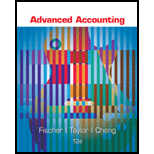
Equity method:
The equity method basically keeps the record of the parent’s ownership interest that is multiplied by the reported net income of the subsidiary. This income will be added to parent’s investment account and the deduction in this method will be of the parent’s ownership interest multiplied by the reported losses of the subsidiary and parent’s ownership interest multiplied by the declared dividends of the subsidiary. All together equals the equity-adjusted balance.
Cost method:
The cost method basically retains the original cost of acquisition balance in the subsidiary account. As the income is earned by the subsidiary, no adjustments would be made.
To record: The acquisition of L Company in the books of R Company.
Want to see the full answer?
Check out a sample textbook solution
Chapter 3 Solutions
Advanced Accounting
- What is the capital turnover for each division? accountingarrow_forwardCaldwell Corp.'s accounting records reflect the following inventories: Dec. 31, 2018 • • • Raw materials inventory - $90,000 Work in process inventory - $120,000 Finished goods inventory - $110,000 Dec. 31, 2019 • • Raw materials inventory - $70,000 Work in process inventory - $130,000 ⚫ Finished goods inventory - $100,000 During 2019, Caldwell purchased $1,600,000 of raw materials, incurred direct labor costs of $300,000, and incurred manufacturing overhead totaling $180,000. How much raw materials were transferred to production during 2019 for Caldwell? A) $1,620,000 B) $1,630,000 C) $1,600,000 D) $1,580,000arrow_forwardCan you explain this general accounting question using accurate calculation methods?arrow_forward




